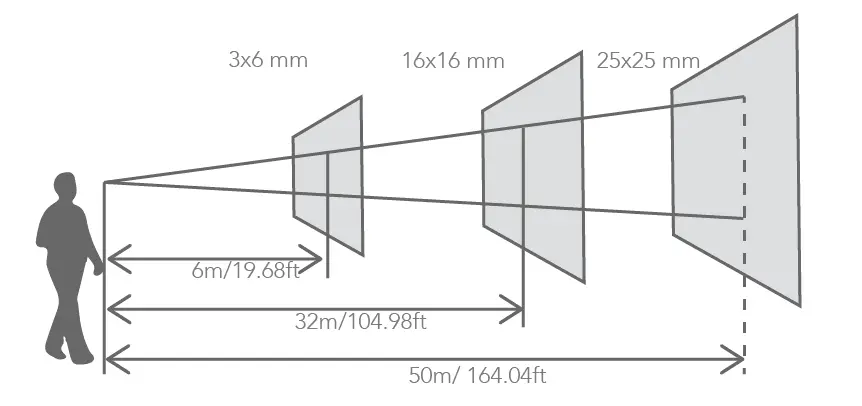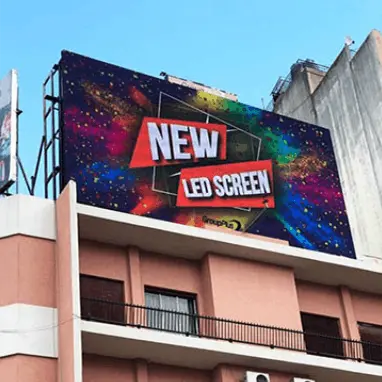In the evolving world of display technology, LED (Light Emitting Diode) displays have emerged as a popular choice due to their vivid colors, energy efficiency, and dynamic capabilities. However, to maximize their potential, understanding the optimal viewing distance is crucial. Unlike LCD screens, where the concern is minimal, LED displays require precise calculations to ensure the best visual experience. This article delves into how to calculate LED viewing distance and determines the best distance for different applications.
1. What is Pixel Pitch?
Pixel pitch, the distance from the center of one LED pixel to the center of the next, is a fundamental aspect of LED displays. Measured in millimeters, it directly influences the resolution and clarity of the image. The smaller the pixel pitch, the more densely packed the pixels are, leading to higher resolution.
Understanding Pixel Pitch
Pixel pitch is not just about resolution; it impacts the display’s ability to render fine details. Smaller pixel pitches mean more pixels in the same area, allowing for sharper images and the ability to display finer details. This becomes crucial in settings where viewers are close to the display, such as indoor advertising or digital signage.
Practical Applications
A 1.5mm pixel pitch is suitable for close-view environments like control rooms, while a 10mm pixel pitch might work for large outdoor displays where viewers are hundreds of feet away. The choice of pixel pitch should align with the intended viewing distance and environment.
2. Why Doesn’t LCD Displays Need to Care About Viewing Distance, but LED Display Does?
LCD displays and LED displays, while both popular, function differently in terms of technology and optimal viewing experiences. Here’s why viewing distance is particularly significant for LED Displays:
LCD Display vs LED Display Technology
LCD display use a liquid crystal display and typically have a fixed resolution dictated by the panel size. The image clarity remains consistent across various distances due to this fixed resolution. LED display, however, rely on discrete pixel technology, with the pixel pitch significantly affecting resolution and clarity depending on the viewer’s proximity.

Impact of Pixel Construction
LED displays are constructed using individual diodes, each acting as a separate pixel. This construction means the resolution can vary greatly depending on the pixel pitch and viewing distance. In contrast, LCD displays maintain uniform pixel density, making viewing distance less of a concern.
3. Why is the LED Viewing Distance Important?
The importance of determining the right viewing distance for LED displays cannot be overstated. Here are key reasons why it matters:

Optimal Image Clarity
The right viewing distance ensures that the image on an LED display is clear and sharp. Too close, and viewers might see the individual pixels, leading to a less cohesive image. Too far, and the details might become indistinguishable.
Audience Engagement
For advertising and digital signage, maintaining viewer engagement is crucial. A display that is either too pixelated or too indistinct due to poor viewing distance calculations can detract from the intended message, impacting viewer retention and response.
Cost Efficiency
Understanding and implementing the correct viewing distance can also be cost-effective. It allows businesses to choose the appropriate pixel pitch without overspending on unnecessarily high resolutions.
4. Is the Smaller the Pixel Pitch, the Better?
While it might seem that a smaller pixel pitch is always preferable, the reality is more nuanced. Here’s why:
Cost Implications
Smaller pixel pitches generally come at a higher cost, given the increased number of LED Display used. For applications where viewers are at a distance, such as billboards, investing in a low pixel pitch might not yield noticeable benefits.
Technical Considerations
Smaller pixel pitches demand more intricate calibration and maintenance, given the dense packing of LED Display. For some installations, particularly those in harsh environments, this could mean increased upkeep.
Viewing Distance Relevance
The ideal pixel pitch is highly dependent on the intended viewing distance. While a smaller pixel pitch might improve clarity for close-up viewing, it may not translate to visible improvements from afar.
5. What Pixel Pitch Has the Best Viewing Distance?
Determining the best pixel pitch for a given application involves several considerations:

Calculating Viewing Distance
A general rule of thumb is that the optimal viewing distance is between 1.5 to 3 times the pixel pitch in meters. For example, a 2mm pixel pitch display should ideally be viewed from a distance of 3 to 6 meters. This ensures a seamless image without perceivable pixelation.
Application-Specific Recommendations
For indoor environments where viewers are closer, such as retail or corporate settings, a pixel pitch of 1.5mm to 3mm is recommended. For outdoor displays like stadium screens, where viewers are much farther, a larger pixel pitch of 6mm to 10mm is more cost-effective and visually sufficient.
Balancing Cost and Quality
The best viewing distance and pixel pitch balance quality with budget. While higher resolutions are visually appealing, they should correspond to practical viewing distances to avoid unnecessary expenditure.
6. Conclusion
Understanding how to calculate the optimal viewing distance for LED displays involves a deep dive into pixel pitch and its implications on resolution and clarity. Unlike LCD Display, where resolution is fixed, LED Display require careful consideration of pixel pitch in relation to viewer proximity to maximize image clarity and engagement.
While smaller pixel pitches offer higher resolutions, they must align with the intended viewing context to be effective and economical. Ultimately, the best LED viewing experience is achieved by matching pixel pitch with the anticipated viewing distance, ensuring both visual excellence and cost efficiency.


